
Sojourner Salutes Aspen Olympians
Everyone who works and sacrifices to try to become an Olympian does a service to their country, their community, and themselves. No place proves that point like Aspen, a town that can claim more than two dozen past and present Olympians, including 2007 Sojourner Salutee Chris Klug, a silver medalist in snowboarding in 2002. For this year’s Sojourner Salutes—our nineteenth annual awards—we honor Bob Beattie, Gretchen Bleiler, and Craig Ward, three locals whose Olympic experiences span fifty years. And whose legacies of giving back will endure far longer.
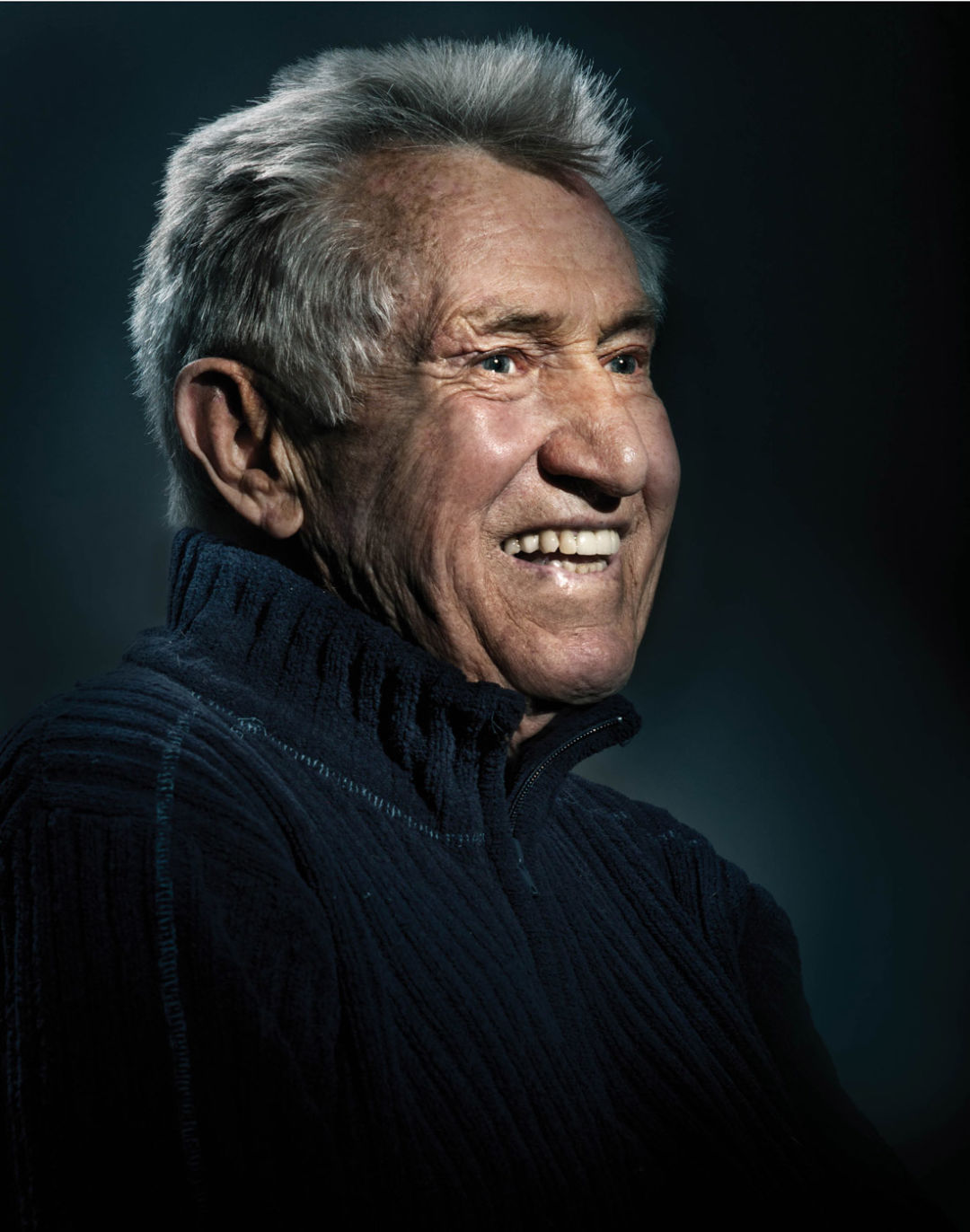
Image: Karl Wolfgang
BOB BEATTIE
In a 2012 Denver Post story about an Aspen reunion of former World Pro Skiing Tour greats honoring Bob Beattie, prominent Colorado ski- and sportswriter John Meyer wrote that Beattie “has done more for skiing in this country than anyone else.” In a speech at the same event, legendary American ski racer Billy Kidd, who was coached by Beattie, told him, “You have shaped our sport; you have shaped our lives; you have shaped the future for so many kids on this planet.”
Those are no minor accolades from people well qualified to give them. And they are echoed by many in the ski industry, especially in the Roaring Fork Valley, where Beattie has lived since 1970.
Affectionately known to his many friends as “Beats,” Beattie was appointed the first permanent Alpine coach of the US Ski Team in 1961, when he was barely older than some of his racers. His youth made him a controversial choice, but at the 1964 Innsbruck Olympics, Beattie’s team produced the first-ever medals for men in alpine skiing: a silver for Billy Kidd and a bronze for Jimmie Heuga, both in slalom.
It was a watershed event in American ski racing and American skiing in general. While Europeans had always judged their ski racers by their careers, Americans barely noticed theirs at all, and then only at the Olympics.
After being a prime mover in creating the season-long international World Cup series, Beattie parted company with the US Ski Team and moved to Aspen in 1970. “I was petrified I wouldn’t have anything to do,” he recalls. “And lo and behold, it was one thing after another.”
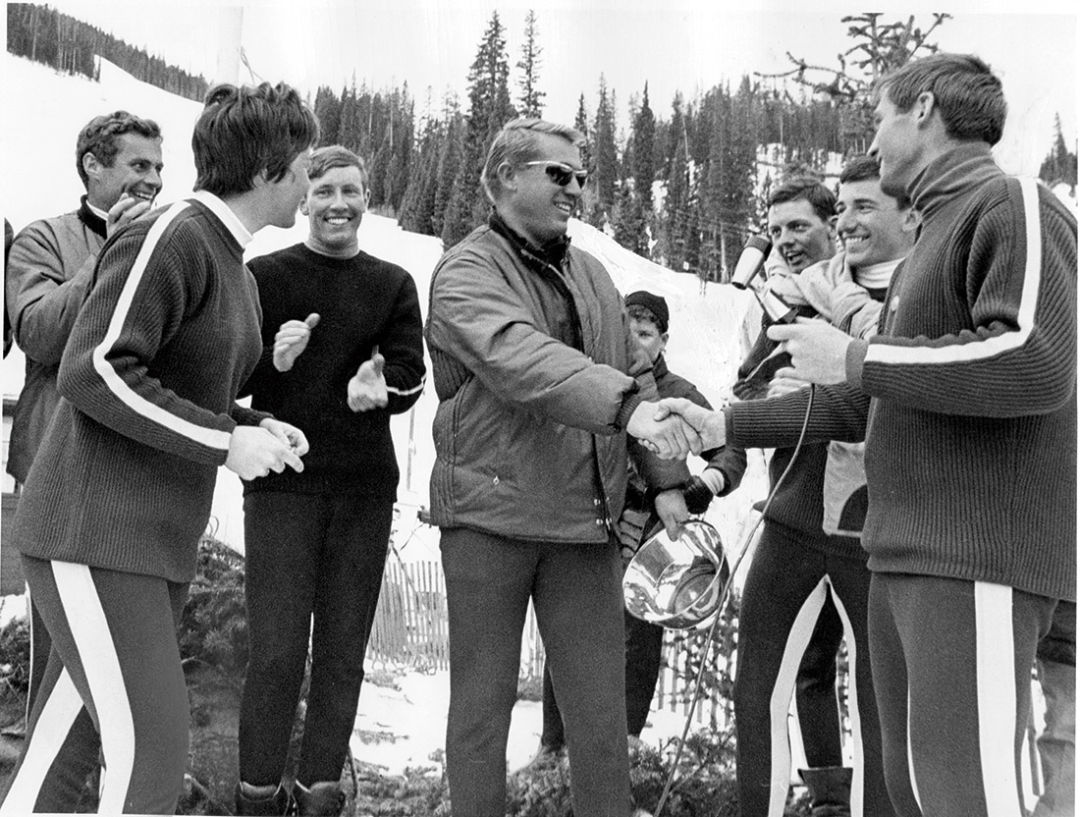
Bob Beattie (center) receiving a silver bowl from members of the US Ski Team and Buddy Werner (shaking hands with Beattie) in 1964.
Image: Courtesy: Bob Beattie
Beattie soon launched the World Pro Skiing Tour, replacing a defunct Euro-heavy enterprise with a head-to-head, visually exciting, dual-course format that barnstormed the country with Spider Sabich and a corps of flamboyant young American stars.
“We encouraged American skiers,” says Beattie. “We told them to be colorful—don’t molest the chambermaids, but short of that, be colorful.” It worked. Television and live audiences loved the events, and Beattie ran the show until it ended in 1981.
He was also a sports broadcaster for forty years and part of the ABC Sports broadcasting crew that covered numerous ski races, including World Cup events in Aspen. His memorably breathless narration of Franz Klammer’s epic gold-medal downhill run in Innsbruck in the 1976 Olympics brought Beats back to the scene of his early triumph. As Klammer has said, “I always question myself, ‘Did my run make Bob more famous, or [his] commentary make me famous?’”
Beattie also pioneered recreational ski racing in America by taking over NASTAR when it had eight member ski areas participating. By the time Beattie left, thirty-one years later, it had expanded to well over a hundred.
For his iconic international image and long-term contributions to skiing, Beattie is beloved locally. He spearheaded the creation of the Aspen Valley Ski and Snowboard Club Endowment Fund, now named for him, which makes it possible for a current 1,700 valley kids to ski and get instruction for a minimal fee. “I’m proudest of it of anything I’ve done in the valley,” he says. And that covers a lot.
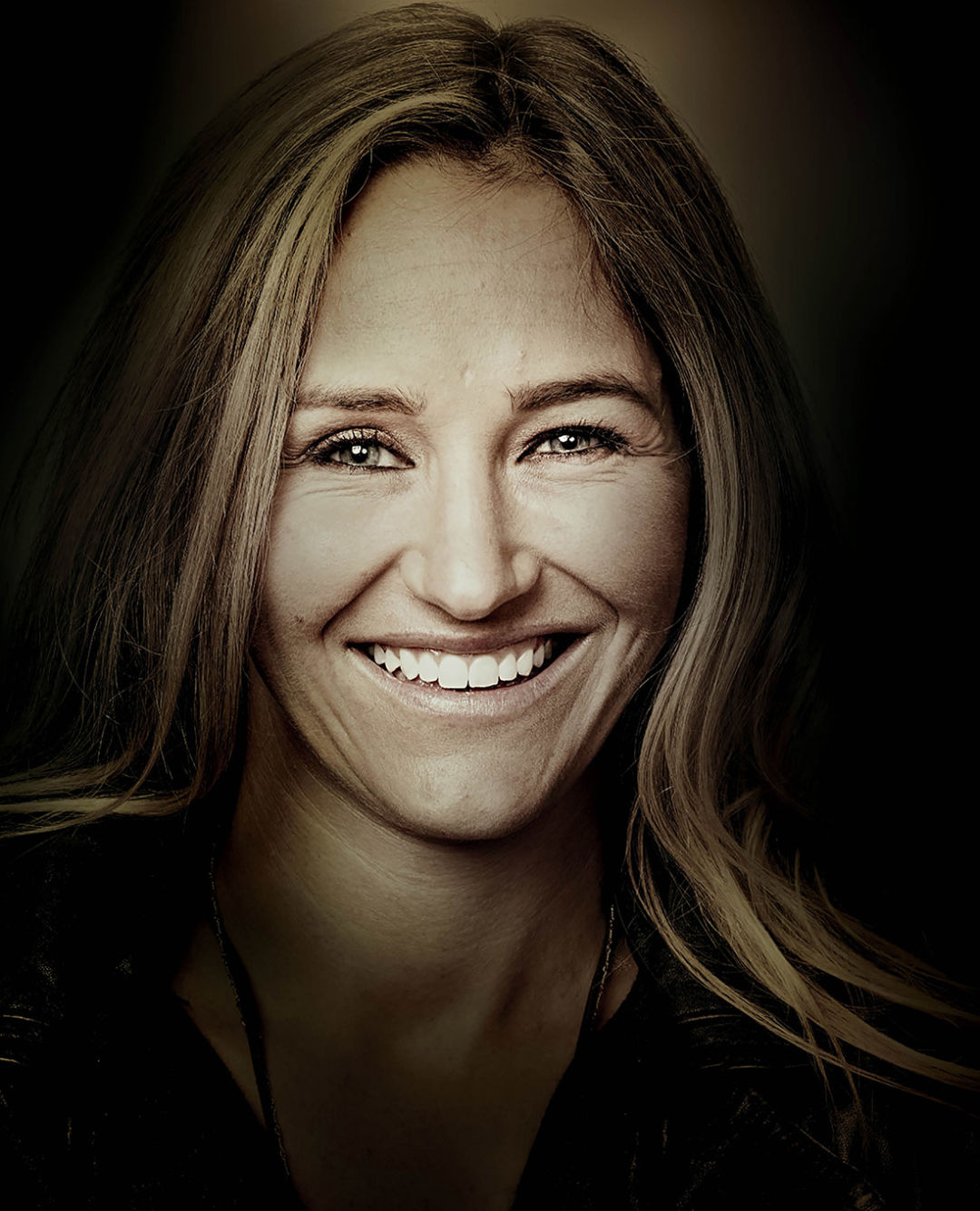
Image: Karl Wolfgang
GRETCHEN BLEILER
Superstar snowboarder Gretchen Bleiler was practicing a halfpipe maneuver on a training trampoline in Park City in 2012 when it went badly wrong. She smashed her eye socket with her own knee, breaking her nose and dislodging her eyeball. Bleiler suffered a major concussion and ongoing double vision, raising many questions about whether she would ever be able to snowboard again, let alone compete at the level that earned her five X Games golds and a silver medal in the 2006 Olympics.
“I’ve been hurt before—a blown ACL, a shoulder—but this was a whole different level,” she says. “I was first focused on getting back my vision and my quality of life. The biggest challenge was to be patient once I got my vision back. But I feel these challenges happen for a reason [including] to teach me more finesse, patience, and humility.”
At thirty-one, Bleiler regained the podium at an event last summer in New Zealand and is competing for a spot on the US’s Sochi Olympic team. She knows this could be her last go-round: “I’m nearing the end of this career. If I make it, this will be my last Olympics and my last year of competition. That makes me appreciate the day-to-day of it.”
For years, Bleiler has hoped to inspire other girls to accomplish their dreams by her example. “Gretchen has always been a talented, well-spoken ambassador for snowboarding,” says her fellow Sojourner Salutee Craig Ward.
Now she wants to do more. Very self-motivated and hardworking, Bleiler has been using yoga and meditation for a number of years. “Where I’m heading now is learning to teach the valuable tools and techniques of meditation, Ayurveda, and yoga that have been so instrumental in my life,” she says, “so that I can turn around and help others on their journey.”
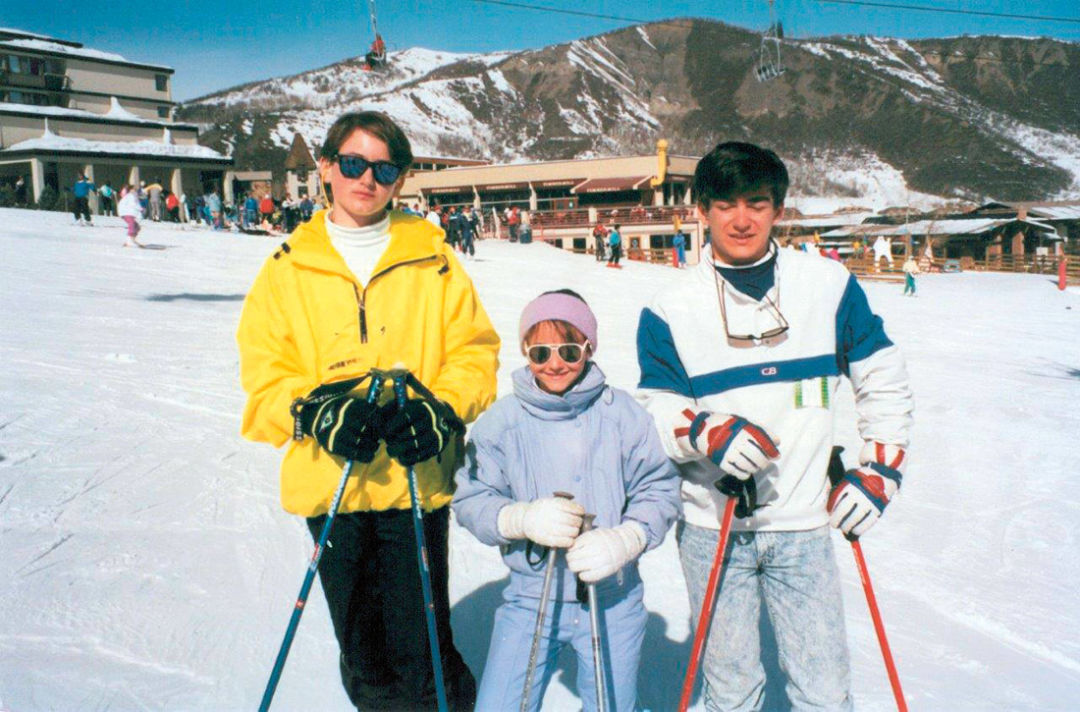
Gretchen Bleiler on Fanny Hill in Snowmass with her brothers, Scott and Chad, circa 1985
Image: Courtesy: Gretchen Bleiler
Part of what has inspired Bleiler was growing up in Aspen since she was ten. “We have a very unique community and education system that stresses the importance of living and playing and learning from our natural environment,” she says. “And that really gives kids a deep respect for the environment.” She is an avid supporter of the Aspen Center for Environmental Studies (ACES), where she is on the board.
Other environmental interests include being on the board of directors of Protect Our Winters, whose mission statement is to “unite and actively engage the global snow-sports community to lead the fight against climate change.” Bleiler and her husband, Chris Hottel, have also started a company called Nice Reusables. Their first project is a cleanable, reusable plastic water bottle called Alex, which stands for “always live exceptionally.”
Bleiler is also a strong backer of the Aspen Valley Ski and Snowboard Club. “I got my first opportunity to compete and ride with amazing coaches and riders who inspired my riding and my fire to push myself,” she says. “And they’re still teaching and inspiring me now! Travis McClain, Tyler Lindsey, and the kids of the whole snowboard team have always reminded me of that pure spirit and passion that we all need to constantly live and ride from.”
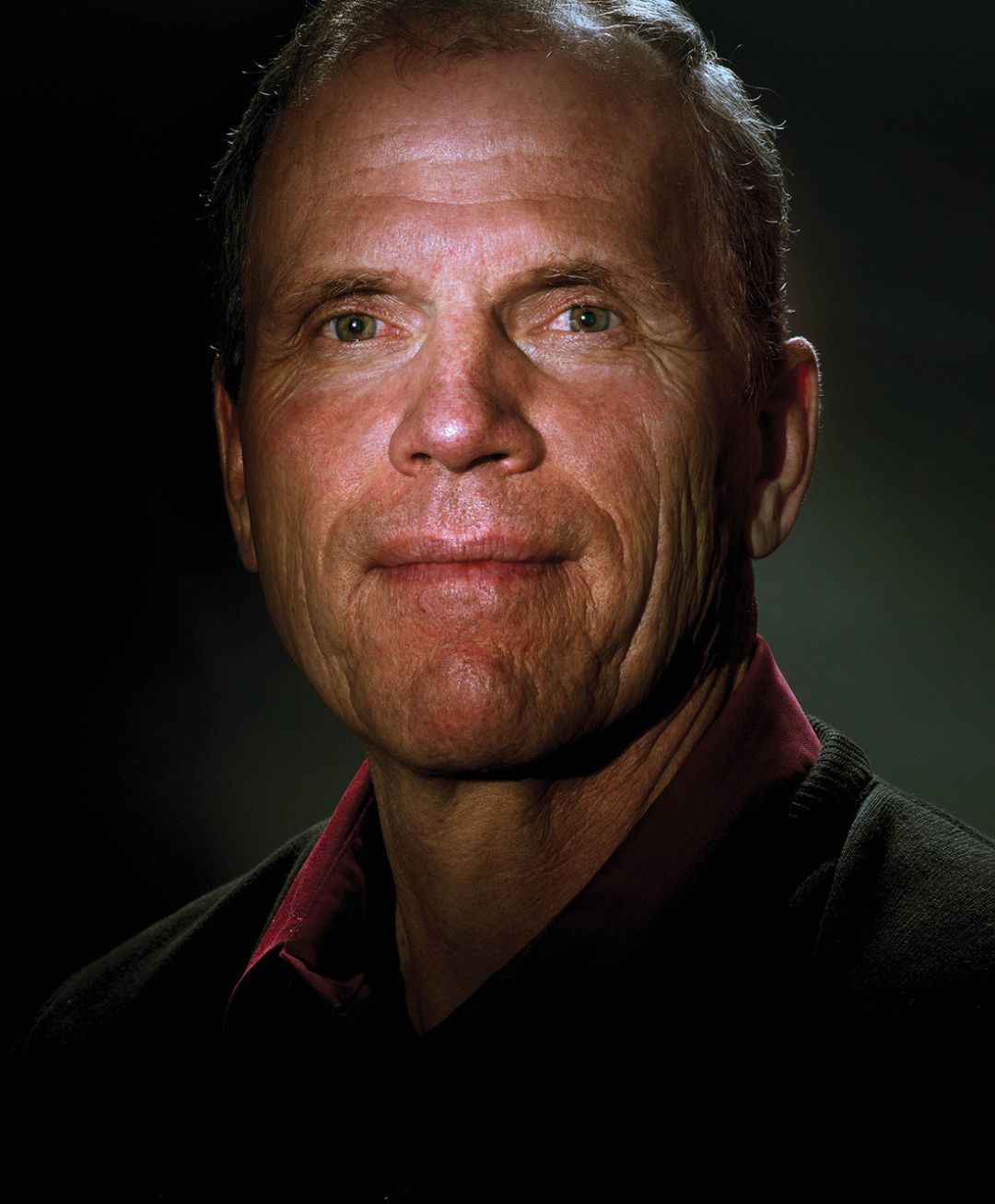
Image: Karl Wolfgang
CRAIG WARD
“I cannot think of a better way to give back to any community than to get kids into a lifelong sport such as skiing,” says former cross-country skiing Olympian Craig Ward. “It teaches discipline, motivation, and rewards kids for their commitments.”
Like Bleiler and Beattie, Ward has deep ties with the Aspen Valley Ski and Snowboard Club. “I plan to be a member of AVSC until I die,” he notes. “It has more impact on more local kids (and families) than any other organization. I became an Aspen Ski Club member when I was five years old, and it was that introduction to skiing that put me on a path of athletic excellence embraced by college education, worldwide travel and exposure, and eventual Olympic selection.”
Ward’s family moved to Aspen from Ohio when he was two, then returned to Ohio when he was thirteen. “I came back for good at age thirty, in 1984. I was fresh off the US Ski Team and had great memories of hiking and camping in the mountains when I was younger. So on my return, I would go on long runs and hikes and ski tours to re-explore the area around Aspen.” He married his wife, Becky, in 1986. Their son, Michael, is twenty-one and a member of the US Nordic Combined Ski Team.
Since leaving the US Team, Ward has continued to be extremely involved in local Nordic activities. He helped start the Aspen Snowmass Nordic Council, which designed and implemented the grooming of over seventy-five kilometers of cross-country ski trails connecting Aspen with Snowmass. That system is now part of the Pitkin County Open Space and Trails Program, and Ward served as one of the first county trustees for the Open Space and Trails board. “I’m particularly proud that the cross-country system is still very popular and is a vibrant part of our winter resort business.”
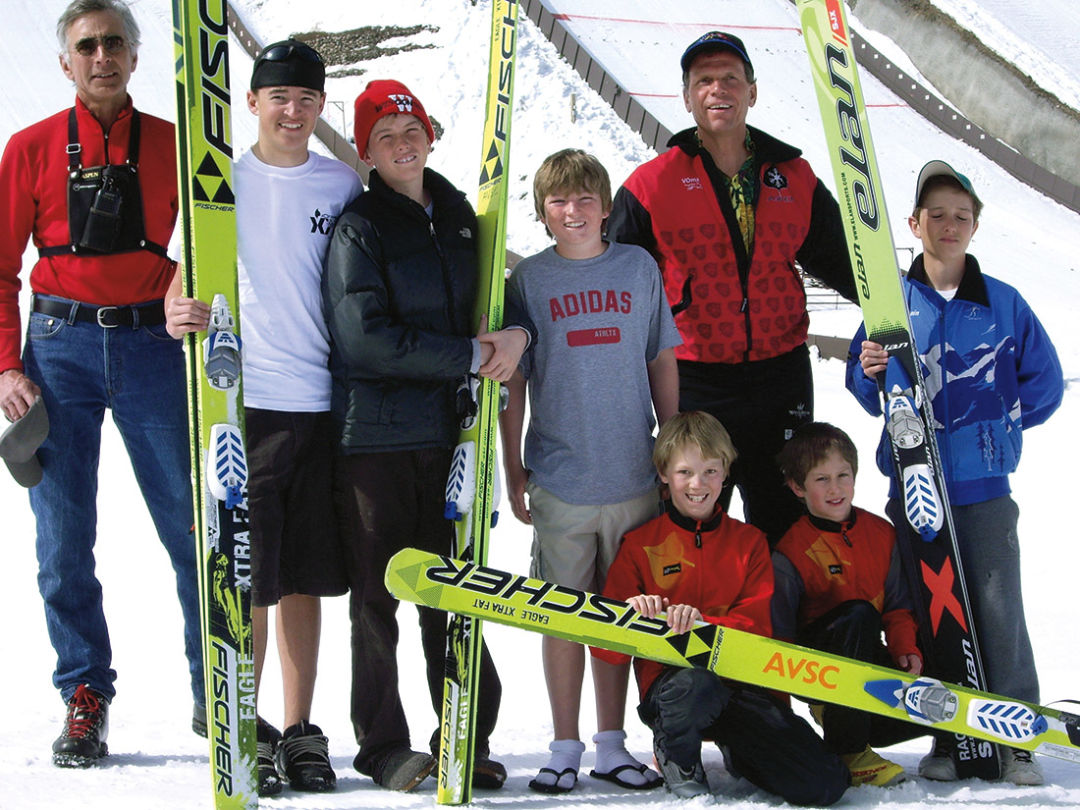
Craig Ward (second from right) with members of the US Nordic Combined Ski Team in Steamboat Springs, circa 2008
Image: Courtesy: Craig Ward
A top-producing realtor since 1987, currently with Aspen Snowmass Sotheby’s, Ward hasn’t let his day job hinder his zeal for local skiing projects. As a member of the United States Ski Association board of directors, he discovered in the mid-1990s that the USSA wanted to get rid of its Braun Hut System at the end of the Castle Creek Valley. Looking to save one of the first local hut systems, Ward helped form a nonprofit to buy (for a nominal $3,000), renovate, and run the huts and even create a new one. “All in all, we raised over $740,000 in the past twelve years. Now we have seven beautiful backcountry ski huts, all open for public use.”
Other local nonprofits Ward has worked with include the Aspen Valley Land Trust and the Aspen Rotary Club for fifteen years.
For hometown inspiration, Ward cites his parents—“Both of them were huge supporters of my athletic ambitions, as well as instilling in me a positive outlook,” he says—and two of his coaches: longtime local cross-country guru John Kuehlman and high school coach Dick Kellom. They paid it forward for Ward; he’s doing it for the next generation of Aspen kids.














































